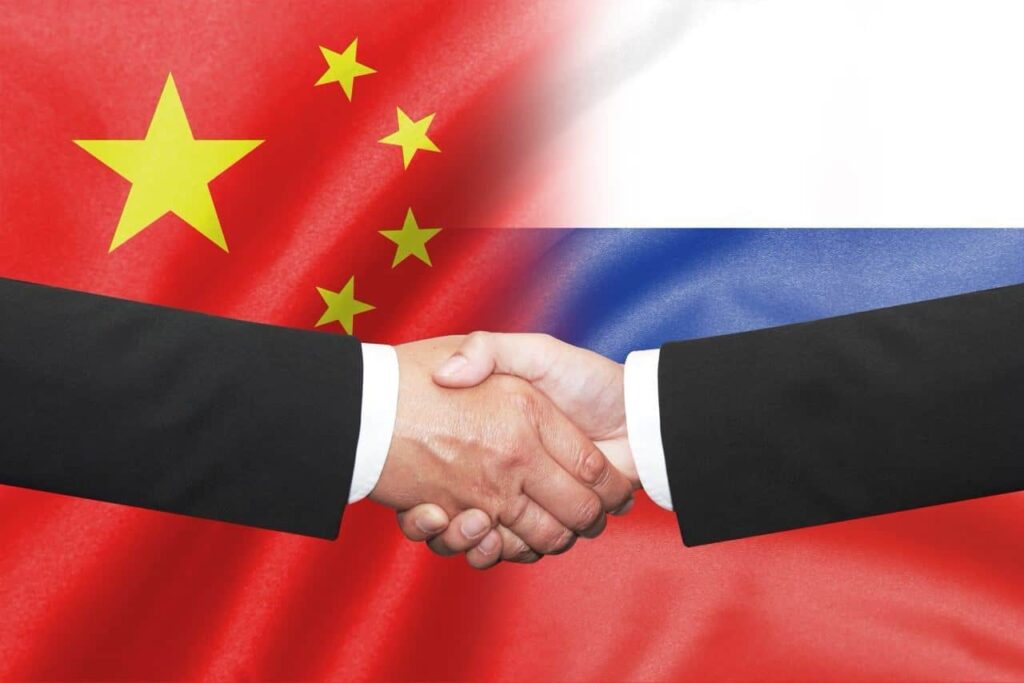It is no secret that gold tends to trend higher in times of uncertainty as the precious metal remains an important store of value across the globe.
Given the fact, it comes as little surprise that recent months have seen the world’s leading commodity climb ever higher even reaching a new all-time high above $2,200 earlier in March, though it has retraced somewhat by press time.
Furthermore, gold has seen such a rise in recent years that an investment in the precious metal in 1999 would have provided significantly more growth than an investment in a fund tracking the S&P 500 index made near the same time.
Picks for you
The trend has become so strong that gold has started transforming its previous resistance level of $2,000 per ounce into a new support zone with much of the commodity’s strengthening stemming from the “unlimited friendship” between Presidents Xi Jinping and Vladimir Putin, per an X post made by Bloomberg’s Mike McGlone.
Gold is about as trend-ready as it gets, and what was resistance around $2,000 an ounce appears to be transitioning into support. The metal first breached this threshold in 3Q20, and the March 26 price around $2,190 is only about $120 above the 2020 high.
The commodity strategist added:
Divergent strength in the metal is my takeaway due to the shift in the world order and the “unlimited friendship” between Presidents Xi Jinping and Vladimir Putin.
How the Russia-China partnership is driving gold prices up
The strengthening relationship between Russia and China – particularly after the former was cut off from much of the global north following its invasion of Ukraine in 2022 – has initiated several processes that have greatly contributed to gold’s popularity.
On the one hand, the friendship between the former and the upcoming superpower has increased the sense of global instability as the posture of both countries is perceived as threatening by much of the global north leading to a flight to gold.
Additionally, Russia’s need to circumvent sanctions imposed in 2022 and its relative success in finding alternative trading partners led to a trend for de-dollarization of global trade.
Indeed, while the bulk of commerce is still done using the American currency, there has been a notable uptick in the use of the Chinese Yuan and local national currencies, likely contributing to a surge of governments around the world stocking up on gold as a way to bolster national reserves.
Furthermore, the sanctions imposed against Russia have had a significant impact on European economies – both due to real effects of things such as the loss of access to cheap Russian fossil fuels, and due to fears of even worse consequences that are yet to manifest – which has contributed to the perceived need for a flight to safety.
Not just Russia and China
It should also be noted that pressure on global safety does not stem solely from Russia and China. In fact, there appears to be no shortage of destabilizing conflicts – hot and cold – in every corner of the world in 2024
While there is a great focus on Mexican cartels, the Russian invasion of Ukraine, Israel’s onslaught against Gaza, and quarterly-made predictions of an imminent Chinese invasion of Taiwan, these are far from the only active conflicts.
The U.S. and the U.K. are actively involved in military operations against the Ansar Allah Movement in Yemen – which is itself a part of the conflict in Palestine. Israel has been sparring with Hezbollah on its northern border for months, and its apparent disregard for the decision of the International Court of Justice has put a dent in the U.S.’ international reputation.
There have also been numerous less-reported-on conflicts such as the civil war in Myanmar and Sudan, the crisis of French influence in West Africa, the belligerent posturing on the Venezuela-Guyana border, the ongoing border war between Armenia and Azerbaijan, resurgent ISIS activity in Syria and Iraq – and now in Russia – and many others.
Gold and the fraught promise of a multipolar world
American reputation has generally been taking numerous hits in recent years among allies and adversaries alike.
Just to name a few examples impactful for its allies, Donald Trump has repeatedly threatened to leave NATO, Joe Biden warned Russia not to invade Ukraine but essentially promised there wouldn’t be unmanageable consequences if it does late in 2021, and the country has pursued a policy of repeatedly avoiding to commit to the defense of Taiwan if the need arises.
The U.S. adversaries and potential adversaries are also likely keen on stockpiling gold as they track the attempts and discussion about the possible seizure and redistribution of Russian assets frozen in the West.
China has, for example, been especially notable for buying significant quantities of the precious metal since at least 2022, likely in response to the cutting off of Russia from much of the global financial system.
The trend is likely only to strengthen as the Biden administration has implemented certain restrictions on exporting advanced semiconductors to the country – a move likely to be seen as a form of economic and technological warfare by the Asian nation.
The dark shadow above the S&P 500
The surge in the price of gold also goes beyond geopolitical considerations on both sides of the Pacific.
On the one hand, there has been significant economic uncertainty in the U.S. casting a dark shadow on what appears like a particularly strong year for the stock market as the major indices – the S&P 500 and the DJIA – have been riding near their record highs.
The instability of the situation is perhaps best exemplified by repeated failed attempts at divining what the Federal Reserve would do about the interest rates.
Last year, there were widespread hopes that 2024 would feature significant cuts but recent months have brought a series of temperings to analyst enthusiasm despite each FOMC seemingly bringing a more dovish FED.
Late in March, for example, Raphael Bostic, President of the Federal Reserve Bank of Atlanta, opined that this year would feature only a single interest rate cut.
In response, some have taken to doomsaying.
Gordon Johnson, the founder and CEO of GLJ Research recently stated that the U.S. will face the ‘most predictable forthcoming inflation crisis ever.’
Robert Kiyosaki, the author of the best-selling personal finance book ‘Rich Dad Poor Dad’ has, in turn, issued repeated warnings of a massive incoming crash and made repeated calls for investors to flee to the relative safety of silver, Bitcoin (BTC) and, indeed, gold.
Beyond the inflation and the interest rates, the stock market has recently been forming patterns worryingly similar to the ones observed prior to the crisis of 1929 with an apparent overconsolidation of gains within the magnificent 7 stocks being particularly concerning.
Beyond the Crisis
Finally, it appears that not all of the rising interest in gold is driven by fear, uncertainty, and doubt. In recent months, the youngest generation of Chinese investors appears to have taken a liking for gold beans.
The beans have reportedly become very popular as they represent highly portable and reliable stores of value and have taken their place with the country’s rising middle class together with gold jewelry.
Admittedly, though, it is possible that the rising popularity of this type of investment can be tied to the stock market crisis in China that saw $7 trillion wiped out over the course of the previous three years. Recovery in the country started only relatively recently after the government stepped in following a particularly bloody start to 2024.
Already in 2022, India and China together accounted for 60% of the entire global jewelry market and, given the cultural significance of the commodity in India and its skyrocketing GDP, the demand is likely to continue seeing significant growth.
Disclaimer: The content on this site should not be considered investment advice. Investing is speculative. When investing, your capital is at risk.







